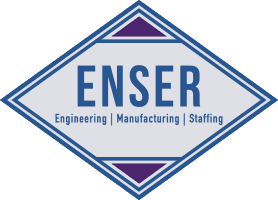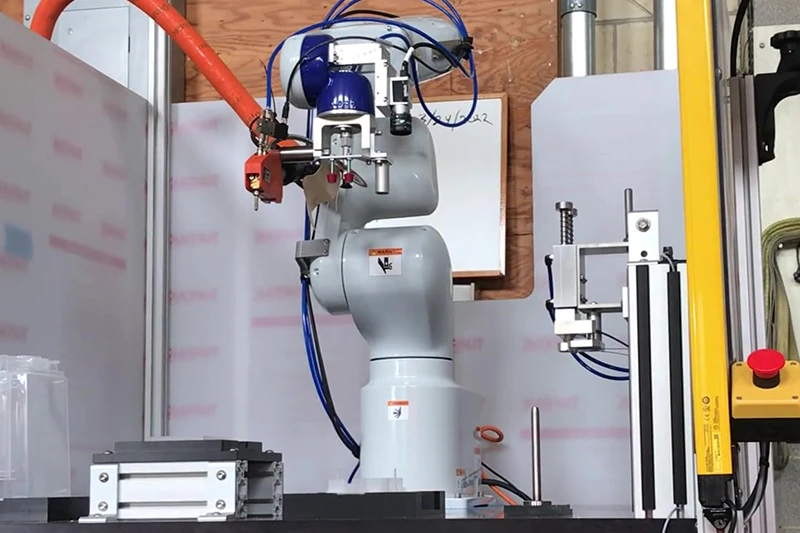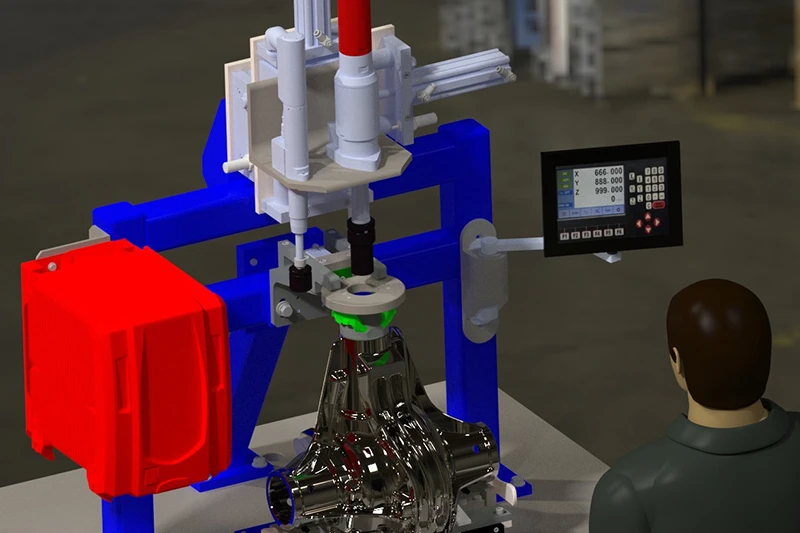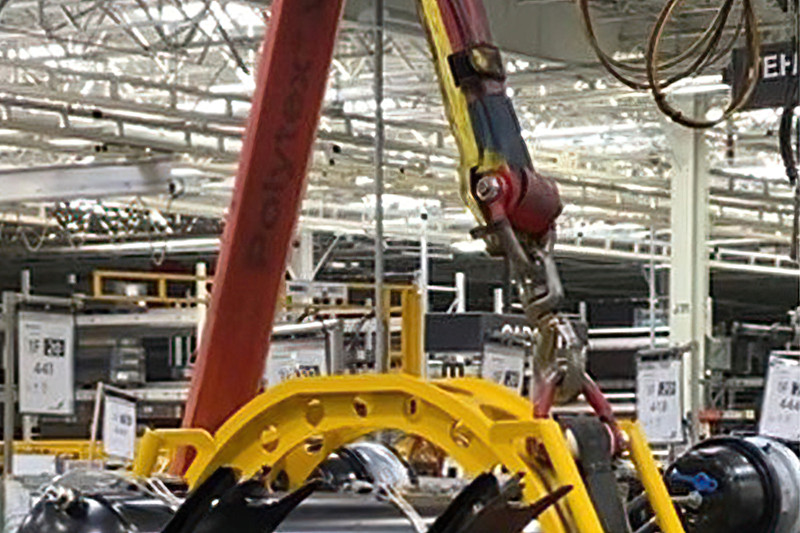Custom Turbine Service Equipment for Safe and Efficient Component Handling
Background:
Industry: Power Generation Project Focus: Below-the-Hook Lifting System for Turbine Transition Component Disciplines: Concept Design, Engineering with FEA, Collaborative DevelopmentOVERVIEW
A leading power generation facility turned to ENSER to develop a safer, more efficient method for removing and installing a combustion chamber transition component within a turbine. The existing manual approach—relying on pry bars, chain falls, and mechanic force—was time-consuming, ergonomically taxing, and presented a range of safety hazards. ENSER engineered a custom turbine service tool designed to streamline the insertion and extraction of the 300-lb component through 16 uniquely oriented turbine ports. The system minimized manual handling, ensured safe alignment, and met rigorous ASME BTH-1 design specifications.
Challenge
Servicing turbine transitions presented significant operational risks and inefficiencies:
- Heavy Load Handling: Mechanics were physically manipulating a 300-lb component inside a confined turbine case—often requiring brute force and increasing injury risk.
- Limited Accessibility: The 16 ports had varying orientations and positions, complicating alignment and increasing setup time.
- Lack of Control: Course corrections during insertion required constant adjustments, and the 60” travel path offered little room for error.
- Inadequate Tooling: Existing service methods lacked precision and posed significant safety hazards to workers inside the turbine.
Solution
ENSER designed and built a robust, crane-suspended lifting and manipulation system capable of controlled multi-axis movement, precise alignment, and ergonomic operator control. Key Features:
- ASME BTH-1 Certified Design: All components were engineered to meet Below-the-Hook safety and strength standards, ensuring material yield strength limits were never exceeded and deflection was tightly controlled.
- Custom Lifting Poles: The pole system was optimized for self-balancing, and engineered to match plant ceiling height and port locations.
- Multi-Axis Articulation: A combination of pivoting and rotating joints, actuated via drive screws, enabled precise orientation and insertion of the transition component.
- Ease of Operation: Retained hardware, hitch pins, and a modular staging system made loading, unloading, and attachment fast and user-friendly.
CUSTOMER Benefits
- Reduced Downtime
Setup at each port was simplified, minimizing time spent on alignment and installation. The improved efficiency helped reduce turbine service cycles.
- Enhanced Operator Safety
Rigid, controlled operations eliminated the use of chains and pry bars. Mechanics no longer needed to work inside the turbine during high-risk handling.
- Ergonomic Improvement
Mechanics could now handle, align, and secure the 300-lb transition with minimal physical strain, improving both safety and morale.
- Custom Fit & Future Flexibility
The system was tailored to the unique geometry and spatial constraints of the turbine, but engineered for adaptability in similar applications.
- Full IP Ownership
ENSER’s designs become the intellectual property of the client, supporting long-term use and strategic advantage.
Frequently Asked Questions
Reimagine Turbine Maintenance
No More Chains or Pry Bars. Let ENSER engineer a safer, faster, and more precise solution for your most demanding service challenges. Contact us to get started.







